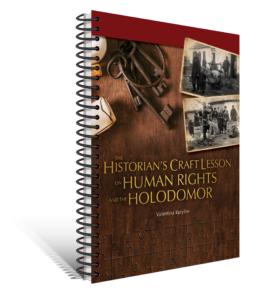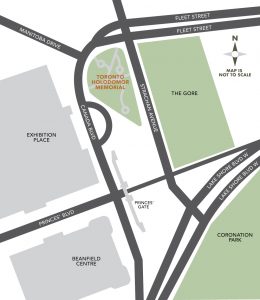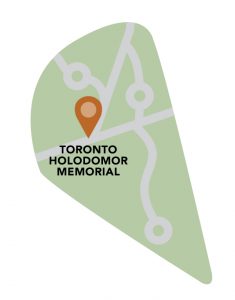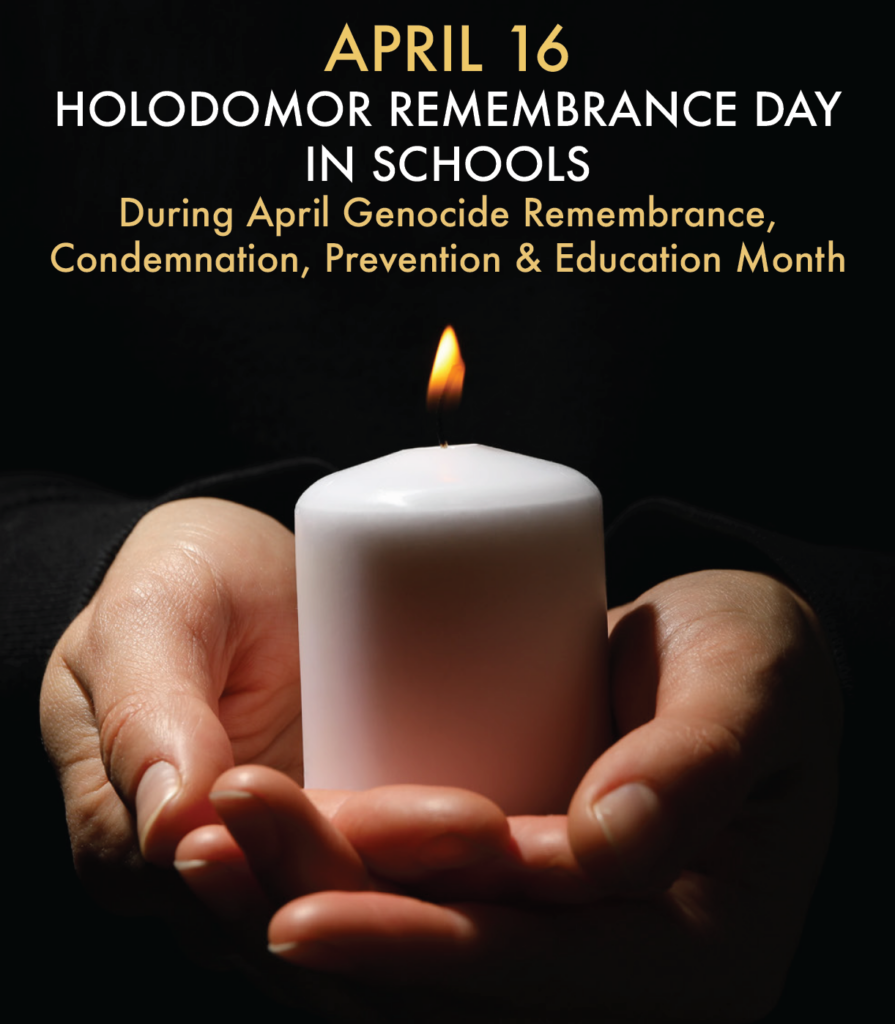Holodomor Memorial Day
A downloadable educational pamphlet with teaching resources to use for Holodomor Memorial Day
Holodomor Memorial Day is commemorated each year on the fourth Friday of November in schools as a Day of Remembrance when we remember the millions of Ukrainians who were starved to death in Ukraine in 1932 and 1933, many of whom were children.
Through Acts of Parliament, the Government of Canada recognizes The Holodomor as an act of genocide. Together with the descendants of survivors living in Canada, let us remember the victims of the Holodomor.
 Loading...
Loading...
Holodomor Memorial Day
In my view, the best thing you could do to commemorate the victims of the famine is to build a society where this could never happen again.
Holodomor Memorial Day in Schools: the 4th Friday of November
On the 29 May of 2008, the Parliament of Canada unanimously passed an “Act to Establish a Ukrainian Famine and Genocide (Holodomor) Memorial Day and to Recognize the Ukrainian Famine 1932-1933 as an Act of Genocide.” As a result of the advocacy of the Holodomor Education Team (UCC-Toronto) and later the National Holodomor Education Committee (NHEC), in 2008, the Toronto District School Board passed a resolution to hold an annual Holodomor Memorial Day in schools on the fourth Friday of November. Since then, other school boards across the country have followed suit. Each year for this event, the National Holodomor Education Committee (NHEC) and increasingly HREC Education, prepare an information pamphlet to help educators commemorate this day in their schools.
In Schools, Holodomor Memorial Day Is November 21, 2025 (4th Friday Of November)
Worldwide, Holodomor Memorial Day Is November 22, 2025 (4th Saturday Of November)
Basic Facts About The Holodomor
- Stalin issued a series of policies targeting the population of Ukraine which led to genocide by starvation in Ukraine.
- The Holodomor occurred in a time of peace, not as a result of war or natural disaster.
- Food was used as a weapon.
- Wheat and other grains were confiscated from farmers by the Communist government. Some of it was sold for export to fund Stalin’s Five-Year Plan.
- 1/3 of all villages in Ukraine were blacklisted, blockaded and the people were left to starve to death.
- Millions of innocent people died.
- 28,000 people died per day at the height of the Holodomor in June of 1933.
- 31% of those who died were children under the age of 10.
- Additionally, the cultural, religious and political leadership of Ukraine was largely destroyed during the 1930s.
- The Holodomor was denied, covered up and ignored by the world for over five decades.
- The Government of Canada officially recognized the Holodomor as genocide in May 2008.
* according to the latest research
Produced by the Holodomor Research and Education Consortium at CIUS–University of Alberta, and the National Holodomor Education Committee of the Ukrainian Canadian Congress.
The Toronto District School Board has prepared two teaching units on the Holodomor for the World History and World Politics Grade 12 courses (2009). It is available to school boards upon request.
Memorial Day Announcement
Today is Holodomor Memorial Day, when we remember and pay tribute to the millions of Ukrainians who became victims of Soviet leader Joseph Stalin’s policy of collectivization. It led to the forced famine of 1932-1933 known as the Holodomor, meaning “death in icted by starvation.”
The victims were mostly Ukrainian farmers, labelled “kulaks” and “enemies of the state,” who protested the collectivization of their private farms into government-controlled collective farms. Those who opposed Stalin’s policies and supported Ukrainian language, religion, or cultural traditions were targeted by the Soviet regime. Stalin cut o food supplies to Ukraine, con scated Ukraine’s grain harvest, and took away its livestock, land and property, leaving people without any food. Farmers were also prevented from travelling elsewhere in search of food. This led to the mass starvation of millions, one third of these deaths were children under the age of 10.
The Holodomor took place 92 years ago. But its memory still resonates today as Ukrainians defend themselves against a Russian invasion and occupation which attempts to destroy Ukraine as a nation. Wheat elds, hospitals, schools, cultural sites and more are bombed with missiles. Media outlets are used to spread disinformation globally to deny Ukrainians their distinct identity. Such human rights violations recall those during the Holodomor, which is now recognized as genocide.
The term genocide was coined by lawyer Raphael Lemkin who survived the Holocaust. Lemkin spoke of the Ukrainian Holodomor as the “classic example” of “Soviet genocide – of destruction, not of individuals only but of a culture and a nation.” Learning and recognizing the truth about our di cult histories empowers us with knowledge about the past to help us respond to the war in Ukraine today with greater understanding. With this knowledge and understanding we can build future global communities with compassion and hope.
Let us remember the people of Ukraine who were starved to death in the Holodomor, and the survivors whose grandchildren are ghting for their identity and right to exist as a nation again today.
Kelly Hiebert is a Manitoba history and social studies educator and Curriculum Consultant for Manitoba Education and Early Childhood Development. He received the Governor General’s history award for excellence in 2021 and a HREC Educator Award Honourable Mention in 2020.
Educational Resources
Holodomor: Voices of Survivors
A 30 minute DVD with firsthand accounts of 25 Canadian survivors who tell their stories as children during the Holodomor.
Contact: office@ucrdc.org
The Soviet Story
The first 11 minutes are an excellent introduction to the Holodomor.
https://youtu.be/zZTA8xc4_8w
Hunger For Truth: The Rhea Clyman Story
The Canadian journalist and eyewitness of the Holodomor in Ukraine was amongst the first to write about it.
www.holodomortour.ca/product/hunger-for-truth-the-rhea-clyman-story-dvd/
Genocide Revealed
This award-winning documentary features personal and historical archival information on the Holodomor. Educational versions are available on DVD in 26 & 52 minute segments.
Contact: yurij@yluhovy.com
Harvest of Despair
This award-winning documentary provides background information with media coverage from the 1930s.
Ukrainian Canadian Research and Documentation Centre 416-966-1819, office@ucrdc.org, www.ucrdc.org/Films.html
Stalin’s Secret Genocide
Provides reflections from Holodomor researchers on various aspects of the story in a 15 minute overview.
Bitter Harvest
A feature film presenting life in Ukraine before and during the Holodomor through the life of two young adults.
www.amazon.ca/BITTER-HARVEST-Max-Irons/dp/B06Y6KZKPG
Mr. Jones
Holodomor Research & Education Consortium (HREC)
Teaching materials, lesson plans and other resources and educational materials. HREC Education is an Accepted Educational Partner of the Toronto District School Board (TDSB)
education.holodomor.ca
Ukrainian Canadian Research & Documentation Centre (UCRDC)
Share the Story: Short excerpts of 80 Canadian survivors of the Holodomor.
www.sharethestory.ca
www.holodomorsurvivors.ca
And 21 Canadian children of survivors: ucrdc.org/cohs
Edmonton Catholic School District
Lesson plans and suggested activities for all grades.
https://www.ecsd.net/page/1585/holodomor-memorial-day
Connecticut Holodomor Committee
“Exposing the Ukrainian Holodomor–How starvation was used as a political weapon”
Unit 2, Chapter 5
www.voicesintoaction.ca/Learn/Unit2/Chapter5/
“How A Grain of Wheat Linked Two Worlds” Unit of study
https://www.stf.sk.ca/unit-plan/how-grain-wheat-linked-two-worlds
To visit, view exhibits and hear survivor testimonies, book speakers and workshops, contact:
Holodomor Research & Education Consortium (HREC) at CIUS, University of Alberta
Conducts teacher training sessions, workshops, class visits and presentations, with educational materials.
Website: education.holodomor.ca
Phone: 416 923 4732
Email: hreced@ualberta.ca
Ukrainian Canadian Research & Documentation Centre (UDRDC)
Conducts class visits and presentations featuring testimonies of survivors and their children, shows documentary ÿlms and exhibits photos and posters.
Website: www.ucrdc.org
Phone: 416 966 1819
Email: office@ucrdc.org
Both are located at: 620 Spadina Avenue, 2nd Floor Toronto, ON M5S 2H4
HREC’s Top Picks of Resources
The Historian’s Craft Lesson on Human Rights and the Holodomor
by V. Kuryliw, Edmonton: CIUS Press, 2024
A sample lesson which engages students in actively analysing and synthesizing a variety of resources utilizing interactive methodologies.
Purchase the book
Holodomor In Ukraine,
The Genocidal Famine: 1932-1933
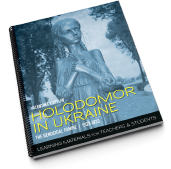
by V. Kuryliw, Edmonton: CIUS Press, 2018
Teaching materials, lesson plans and assignments with straightforward, sensible and basic information about the Famine. The book is accessible, instantly useable and packed with ideas and photocopiable resources.
Contact: hreced@ualberta.ca
https://education.holodomor.ca/holodomor-inukraine-book/
Red Famine: Stalin’s War On Ukraine
by A. Applebaum, NY: Doubleday Books, 2017 An authoritative book on the Ukrainian genocide based on the most recent research.
The Holodomor Reader
by B. Klid & A. Motyl, Edmonton: CIUS Press, 2012 A collection of key texts and materials.
https://www.ciuspress.com/product/the-holodomor-reader/?v=3e8d115eb4b3
Stalin’s Genocides
by N. Naimark, Princeton, NJ: Princeton University Press, 2010
Features the Holodomor and other genocides of the Soviet period.
Bloodlands: Europe Between Hitler and Stalin
by T. Snyder, New York: Basic Books, 2010
One major chapter specifically on the Holodomor.
Holodomor of 1932-1933 in Ukraine: Documents and Materials
by R. Pyrih, Kyiv: Kyiv-Mohyla Academy Publishing House, 2008
73 archival documents with correspondence about the Holodomor.
Print copies: hreced@ualberta.ca
E-version: education.holodomor.ca/educational- resources-list/pyrih-documents/
HREC Educator Award For Holodomor Lesson Plan Development
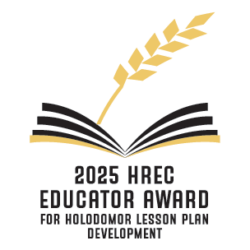 The annual HREC Educator Award for Holodomor Lesson Plan Development is intended to foster the development of innovative, creative and interactive lessons for grades K-12 that develop critical thinking skills while addressing the topic of the Holodomor, and to recognize the outstanding educators who create them. The winning lesson plans will be posted on the HREC Education website.
The annual HREC Educator Award for Holodomor Lesson Plan Development is intended to foster the development of innovative, creative and interactive lessons for grades K-12 that develop critical thinking skills while addressing the topic of the Holodomor, and to recognize the outstanding educators who create them. The winning lesson plans will be posted on the HREC Education website.
This year’s applications must be submitted by May 1, 2025.
Toronto Holodomor Memorial
![]()
Holodomor Memorial Parkette, Exhibition Place
The Bitter Memories of Childhood monument by Ukrainian sculptor Petro Drozdovsky was unveiled in October 2018 for the 85th Commemoration of the Holodomor in Ukraine. The statue depicts the most vulnerable of the Holodomor’s victims and provides an opportunity for student re ̨ection.
Located just inside the Princes’ Gate entrance of the Canadian National Exhibition (CNE) grounds, the memorial site includes a pathway through a small park leading to 3 millstones, each of which provides QR code information about the Holodomor, and the statue. Students can re ̨ect on the history, survivor testimonials and legacy of the Holodomor.
For more information on this and other monuments, visit: education.holodomor.ca/introduction/holodomor-monuments/
April 16, 2025
Holodomor Remembrance Day In Schools
During April Genocide Remembrance, Condemnation, Prevention & Education Month
The Ukrainian Canadian Congress designated April 16 as HOLODOMOR REMEMBRANCE DAY IN SCHOOLS, together with HREC and UCC’s National Holodomor Education Committee (NHEC). Because April 16, 2022 falls on a Saturday, Holodomor Remembrance Day in schools will be held on April 19.
The Holodomor is one of nine global genocides recognized by the Government of Canada and by six of Canada’s provincial legislatures. It was in the Spring of 1933, during the Holodomor’s deadliest year, that the number of deaths escalated significantly.
Every year in April, Ukrainians worldwide traditionally visit cemeteries and remember the dead with special memorial ceremonies held the week after Easter, when victims of the Holodomor are specifically remembered.
Canada has been affected by many genocides and recognizes:
the Armenian Genocide, Ukrainian Holodomor, Jewish Holocaust, the Genocide Against the Tutsi in Rwanda and the Genocide in Bosnia. The Canadian Parliament has also recognized the ongoing genocide being committed against the Yezidi in Syria and Iraq today, the Rohingya
in Myanmar, the Romani during WWII, and currently the Uyghurs in China.
Educators are encouraged to take time in April to remember those who suffered and lost their lives in the Holodomor and other genocides, and to commit to using education to protect and defend human rights and dignity everywhere.

